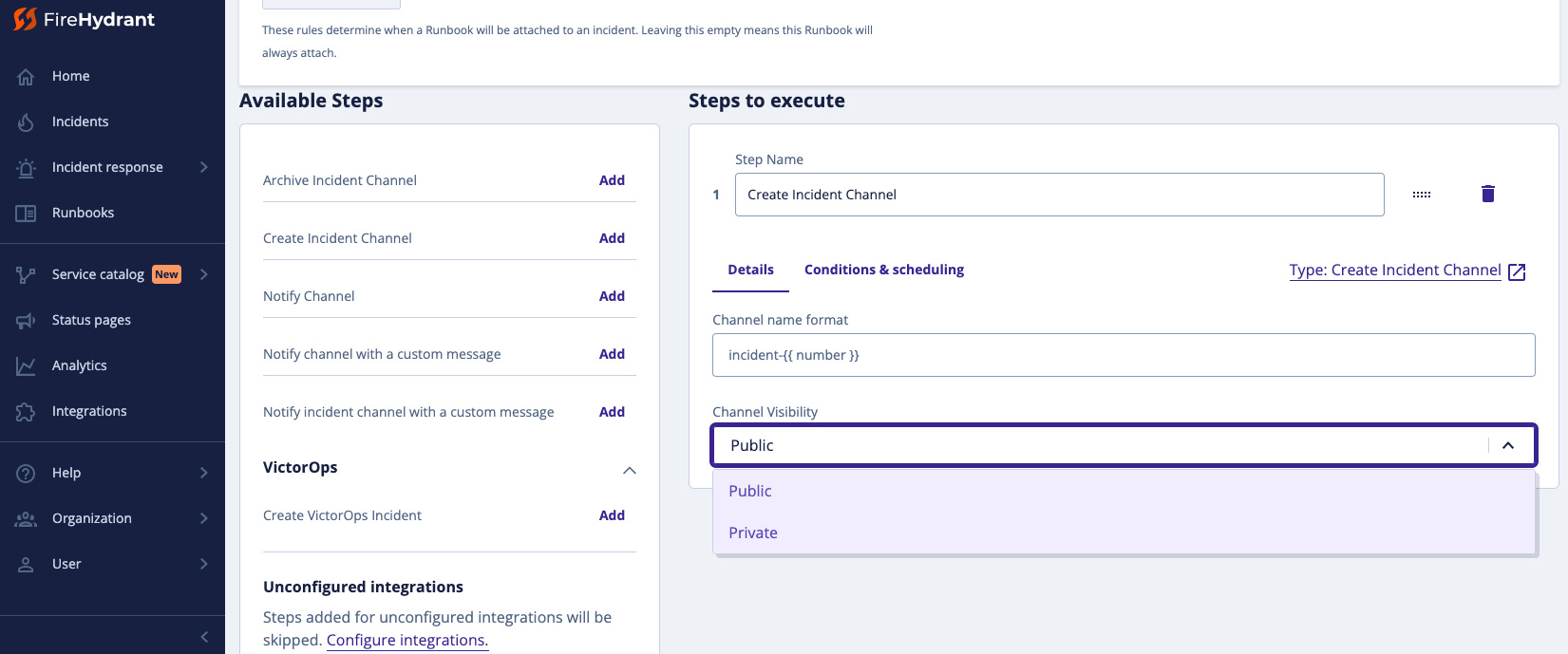Now Available: Private Slack Channels
Now available, FireHydrant users can spin up a private Slack channel to manage incidents

By Julia Tran on 10/26/2021

Ever heard the saying “Too many cooks”? If you’ve responded to incidents, you’ll likely understand the parallels. There are cases when incident command on a public channel isn’t the best option:
-
There’s a large-scale incident that requires coordination across incident commanders. When an incident spans across a high number of teams (or there are several incidents at the same time), it can be more efficient to thread off into different groups that are managed by a separate incident commander. Incident commanders could use a slack channel to discuss coordination (think of something like a scrum of scrum situation).
-
Required incident protocols based on the severity or type of incident. Perhaps there is a part of your company’s infrastructure that if impacted, would require special communication. Using a private slack channel could be a good option to make sure that messages are acceptable before they are shared more broadly.
-
Creating psychological safety when needed. For example, maybe there is a team that is just starting to adopt incident response and isn’t fully comfortable (for whatever reason) with a public channel. We imagine that this seems counter to normalizing incidents, but allowing psychological safety is necessary for your responders to resolve and learn from the incident. This feature allows for a crawl, walk, run approach in building out a healthy culture.
Whatever your reason, we’ve got you covered. Now available, users can spin up a private slack channel for an incident. Read more how to do this here.
We’re excited to empower our users with this flexibility, and this is only the beginning of our privacy-focused capabilities. If your team has strict privacy requirements and would like to help us shape the future of incident privacy, reach out to your Customer Success Manager to explore our Beta program.
See FireHydrant in action
See how service catalog, incident management, and incident communications come together in a live demo.
Get a demo